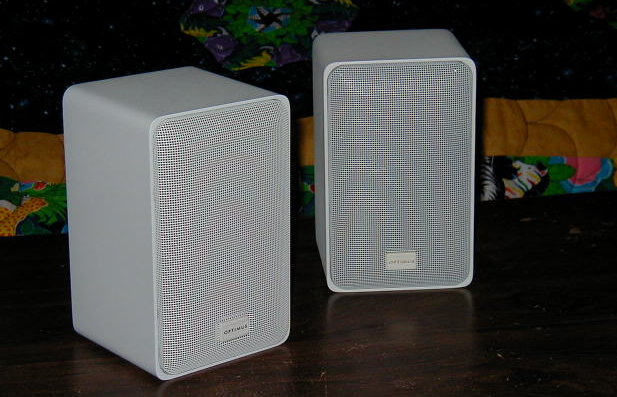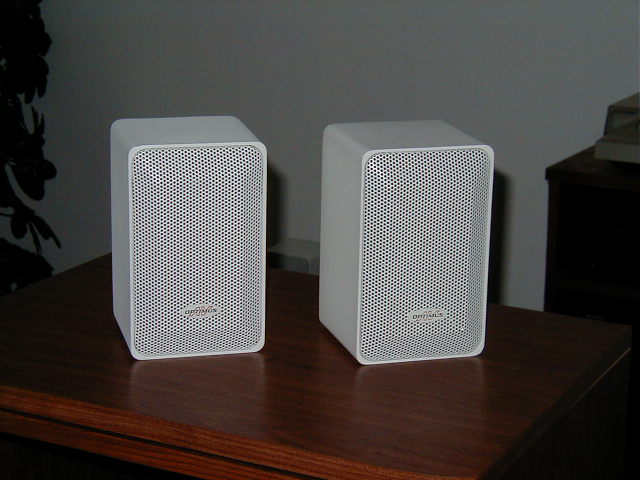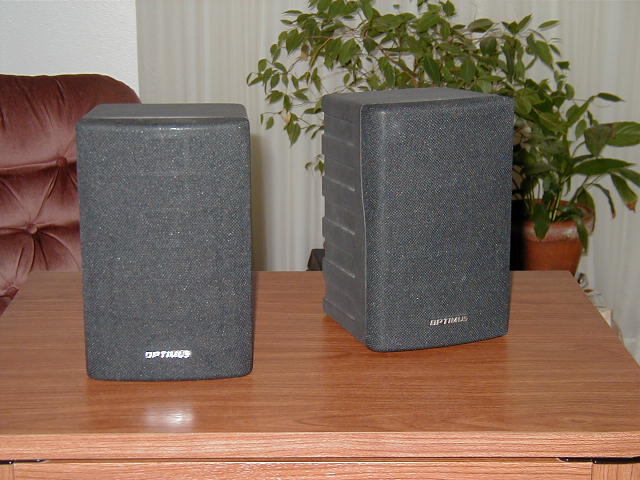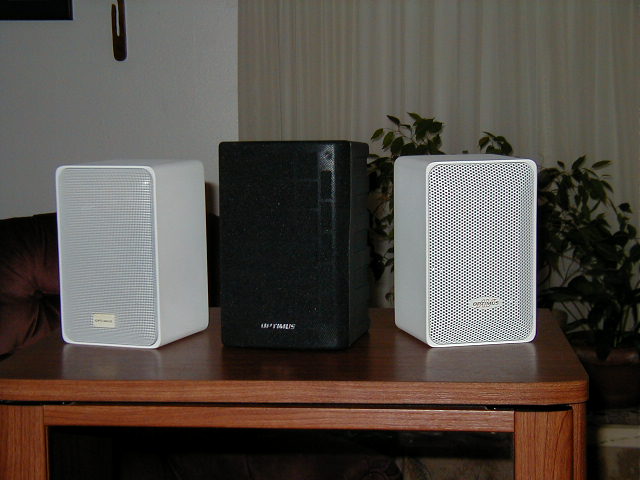The Minimus 7 family of speakers has been offered at Radio Shack stores for 27 years, being introduced in 1978. It has undergone a few minor design changes since its introduction but the basic design remains the same because it was very good to begin with. The enclosure is cast aluminum with a punched metal or wire mesh grille. A few were made with wooden enclosures and a few had cloth grilles. The long excursion LF speaker is 4 inches with a rubber surround and the HF is a 1 inch fabric dome. The original design was an acoustic suspension but the later is a reflex alignment. The enclosure is not subject to vibration but it can rattle against a hard surface if it is placed on one, therefore hard rubber feet are a good investment. The enclosure can benefit from some additional internal fiberglass damping material and the network capacitor is an electrolytic which can be replaced with a film type.




All Radio Shack speakers are now marketed as RCA. This may result in the demise of the famous little speaker. As far as I know the current offerings are the same as the Optimus Pro X44AV, the last ones to say Optimus. This system as purchased is a little rough in the high frequencies and has a resonance in the mid bass frequencies. Most of the bass problems come from the reflex port. These problems can be overcome with simple modifications and while the speaker still isn't up to my standards for the most critical high fidelity listening, it is very acceptable for second systems, bedroom systems, office systems, travel systems and quick setup portable systems. It'll even work for small PAs. The greatest thing about these speakers is not their remarkably innovative design, but the fact that they're on sale every year for 20 or 30 dollars each. I paid 40 dollars for my first pair and I'm not sure that I could have packed this much punch in a box this size for that price if I had built them myself.
I've read a few reviews stating that the speaker sounds "bright and tinny" or "has no bass at all" or "has poor high frequency extension." The people writing those reviews haven't realised that the speaker is showing them for the first time what the rest of their system sounds like. The speaker itself is actually very accurate and has sufficient bass although it doesn't exagerate the bass like the majority of cheap speakers on the market. Their "Qcb" actually measures 0.667, which is close to perfect in my opinion. No, it doesn't have the bass of a 12 inch woofer but what bass it has can be quite satisfying if you don't expect "room shaking bass" that rattles pictures off the walls. It has useful, although not strong, output to 40 cps when loaded by a wall. I'm not a fan of equalisation but if you need more bass try a 6dB boost at 50 cps. You won't believe you are listening to a speaker that displaces only 112 cubic inches.
These speakers, like others in a high quality system, require a good deal of care in placement and setup. Careless placement will result in disappointing performance. If they don't sound good to you move them and listen again. You may have to do so several times to find the spot where they sound best. Baffle step 3dB down point occurs at 1000 cps and there is no compensation in the filter network so these must be used close to a reflecting boundary to direct everything below that point into the listening area. To my ear the acoustic suspension design sounds better than the reflex design. The bass port is intended to add to the quantity of bass the speaker has, which it does somewhat, but at the expense of quality. It provides a boost of 1.5dB in the 120 to 350 cps range at the expense of output in the 40 to 80 cps range. I prefer the gentle extended rolloff characteristics of acoustic suspension systems to the abruptness of reflex systems. The port is also too small as the air mach speed is 0.34 which generates a noise and there is substantial phase shift in the reflex version. You can use a hard rubber stopper to plug the port for experimentation to see which way sounds best to you. I leave the plugs in my Pro X44s all the time. The larger cabinet of the Pro X7s sounds OK with the port open but it still suffers some phase shift and there is some air noise in the port at higher output levels as the vent mach is 0.44.
The Minimus 7s have a larger brother; the Minimus 77s. These have a 5 inch LF speaker rather than a 4 inch but they share the same HF driver. The cabinet is also somewhat larger. It's hard to say that one sounds better than the other. They each have their own strong points. The 7s are certainly more impressive for their size but the 77s have a bit more output than the 7s and would work better when used in a larger room or outdoors when high output is required. I've had no trouble achieving SPLs of 90 dB in my living room with the 7s, and this is using them full range (no separate LF system) with a few dB added in the lower end. The 77s do not have any better bass response than the 7s do.
Obviously, neither of these system were intended for use where extremely high output or extremely low bass response is required. The 7s/X44s are capable of at least 103dB output above 150cps but as frequency decreases power handling becomes driver excursion limited to about 18 watts. Some may want to use separate LF cabinets to add the bottom two octaves but many will find that they sound great without. I do not usually use separate woofers with mine. If you plan to do so I would suggest actively crossing them at 250 cps or above. This will take a great burden off of the relatively small 4 inch driver. Even at their modest cost these systems are superior to many of the mini speakers that are often found in restaurants and other public places. I've compared the Minimus 7 to a number of other mini speakers including Bose, KLH, Harman Kardon, MG, and JBL and the 7s win every time. I've never found a better 112 cubic inch speaker anywhere.